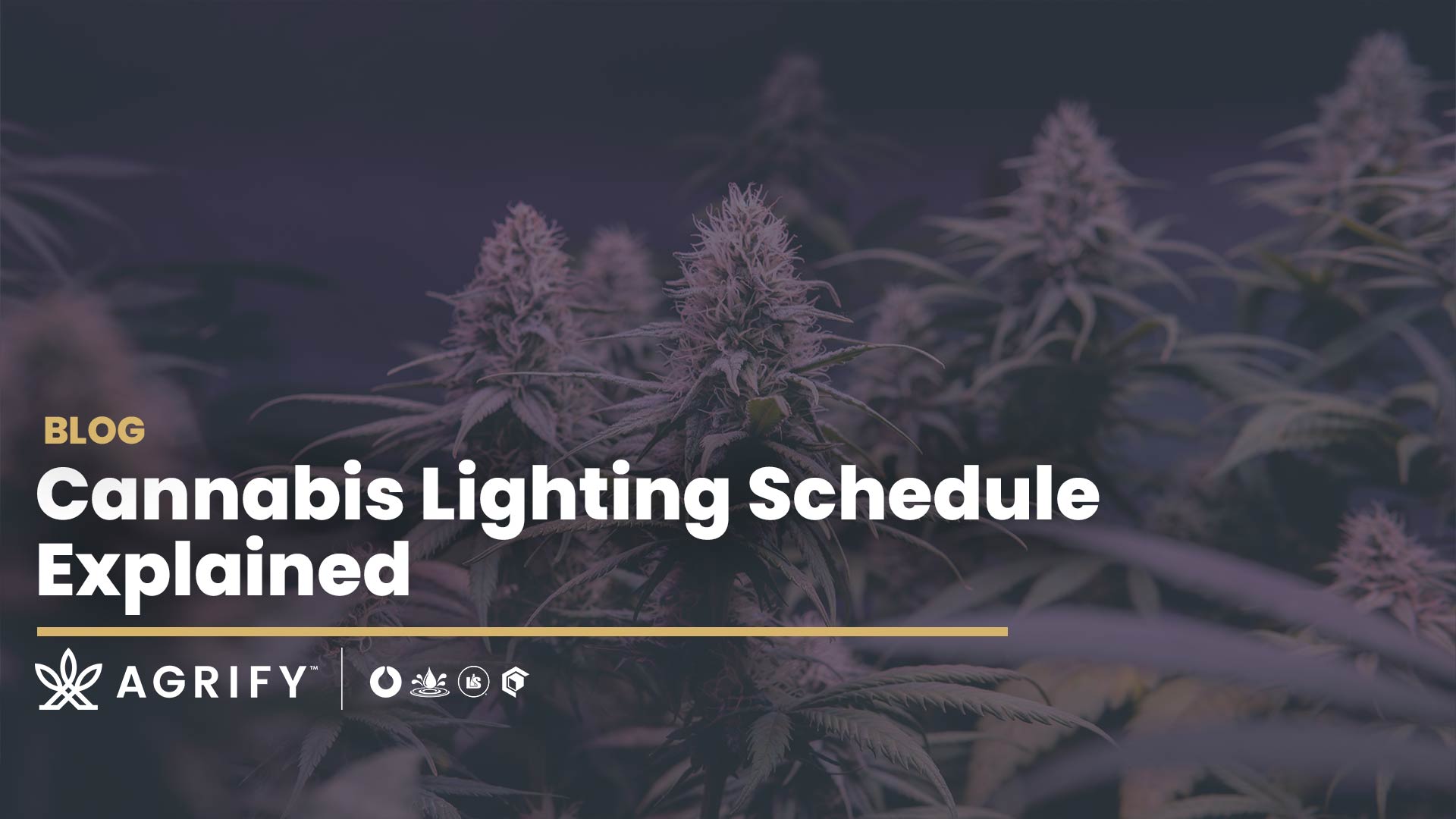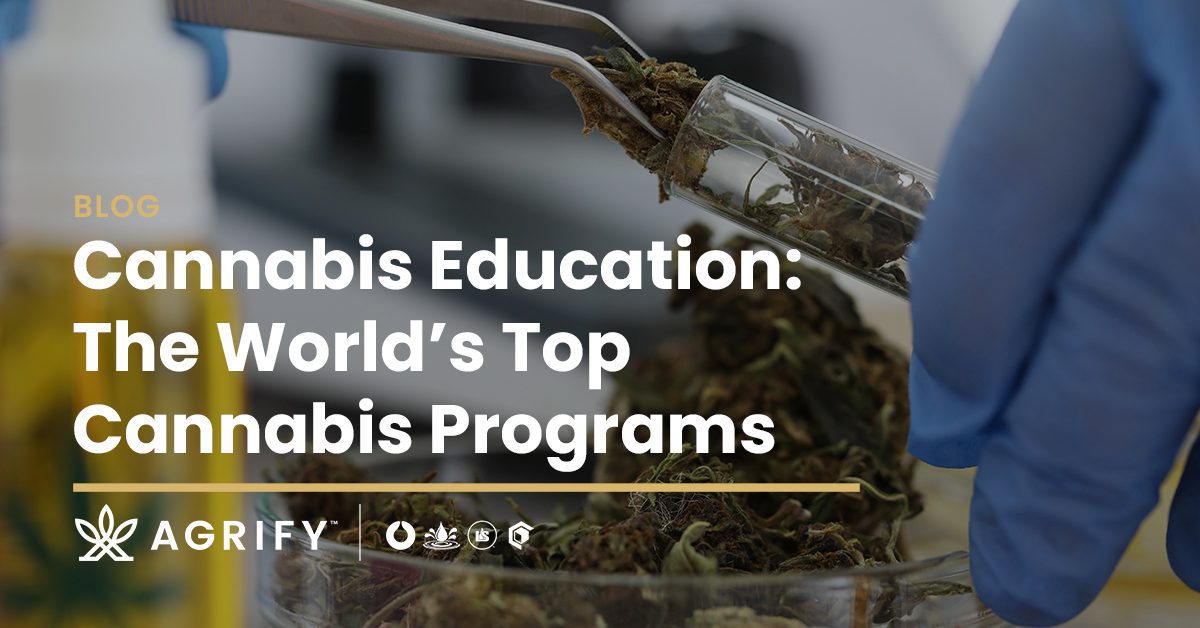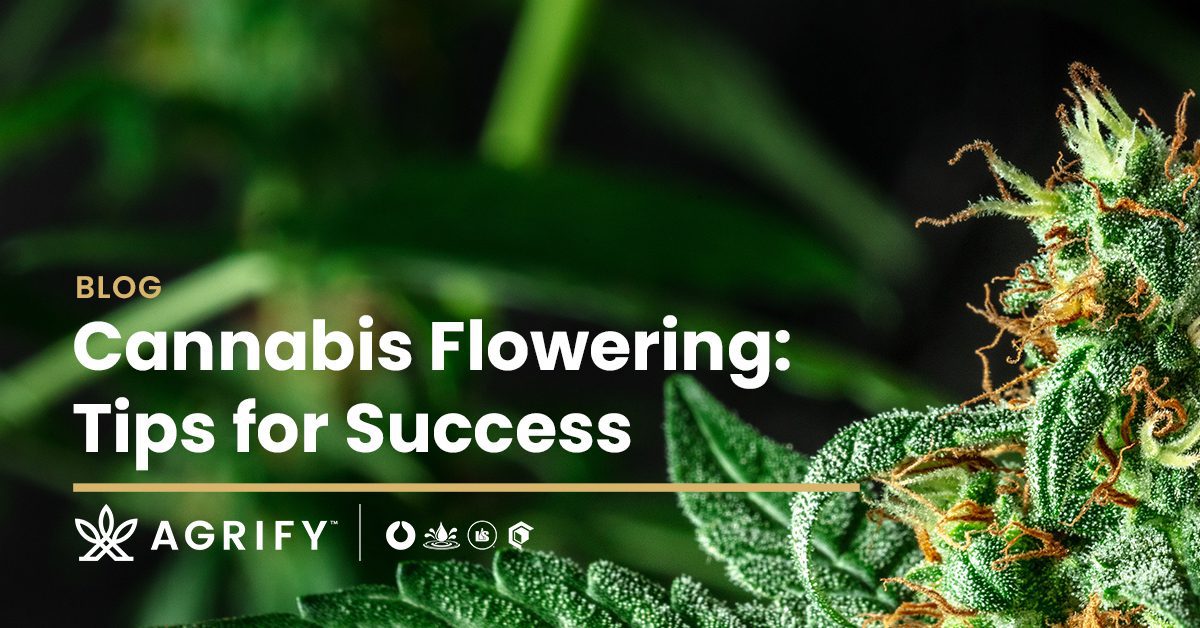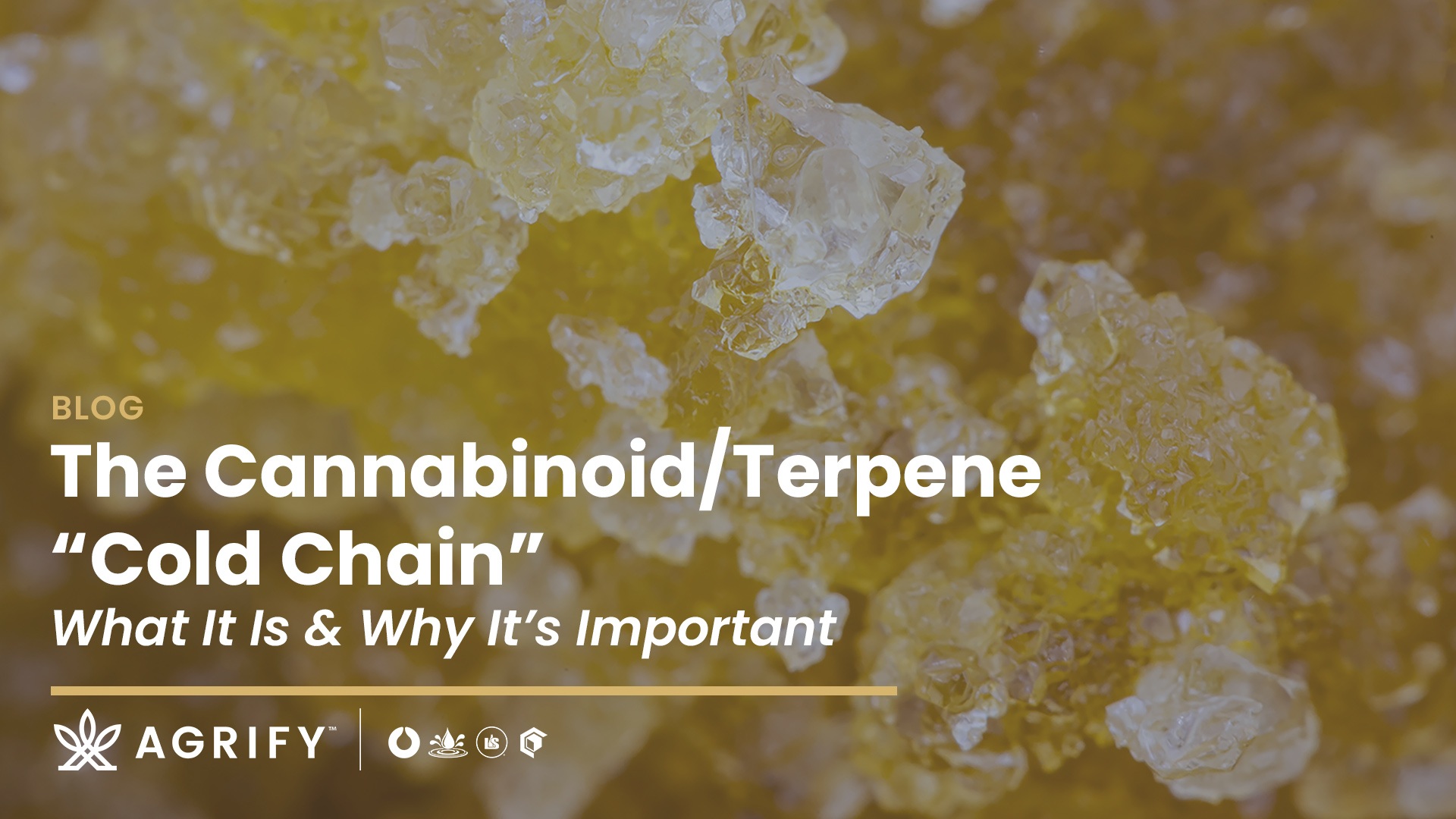
In the world of top shelf cannabis concentrates and SKUs, using fresh frozen cannabis to produce a “live” product that preserves the full profile of the strain is the gold standard.
For many consumers, live concentrates, both solventless and solvent, tend to offer something special that other ones don’t—namely fresh, delicate terpene profiles that closely resemble the plant’s aroma prior to being harvested at its peak trichome ripeness. When made well, these extracts command higher price points than their non-live counterparts and are among the most popular products for connoisseurs today.
In order for processors to bring competitive live rosin or live resin SKUs to market—especially those that will get purchasers raving on social media—a thorough understanding of the cannabinoid cold chain is extremely important.
In this blog, you’ll learn about cold chains, the volatility of cannabinoids and terpenes, as well as how to think about the best logistical moves your business can make to bring a great live cannabis product to market.

What is a “cold chain”?
While most of us take it for granted or simply aren’t even aware of it, the “cold chain” in the traditional sense of the term is one that comes from the world of global logistics and is how perishable products (mainly food) are safely transported from manufacturers to their end distribution point.
All of the eggs, meat, dairy, frozen foods, and perishable items we enjoy are made possible by this miracle of modern transportation. This requires cold storage in three key phases: at the product’s point of origin, during transport, and at the product’s destination. While setups may vary, this typically takes the form of massive cold storage at warehouses where perishable products are housed, chilled trucks where those products are transported to their final destination to be used or sold, then additional cold storage at the location where they will be sold or used. When it comes to cannabis extracts, this concept pertains to the preservation of terpenes/terpenoids and cannabinoids from the garden all the way through to the consumer.
When high grade cannabis is frozen and properly moved through the cannabinoid cold chain, extractors can make magic. If not, the precious plant compounds are not preserved, but instead degraded along every step, resulting in products that lack the full complexity that was first achieved in the garden they came from. This preservation process demands keeping the cannabinoids and terpenes below freezing from start to finish, ideally a few degrees or much more below 32°F. This is no easy feat and requires communication, cooperation, and mutual understanding amongst all parties involved, typically across multiple licensed cannabis businesses.
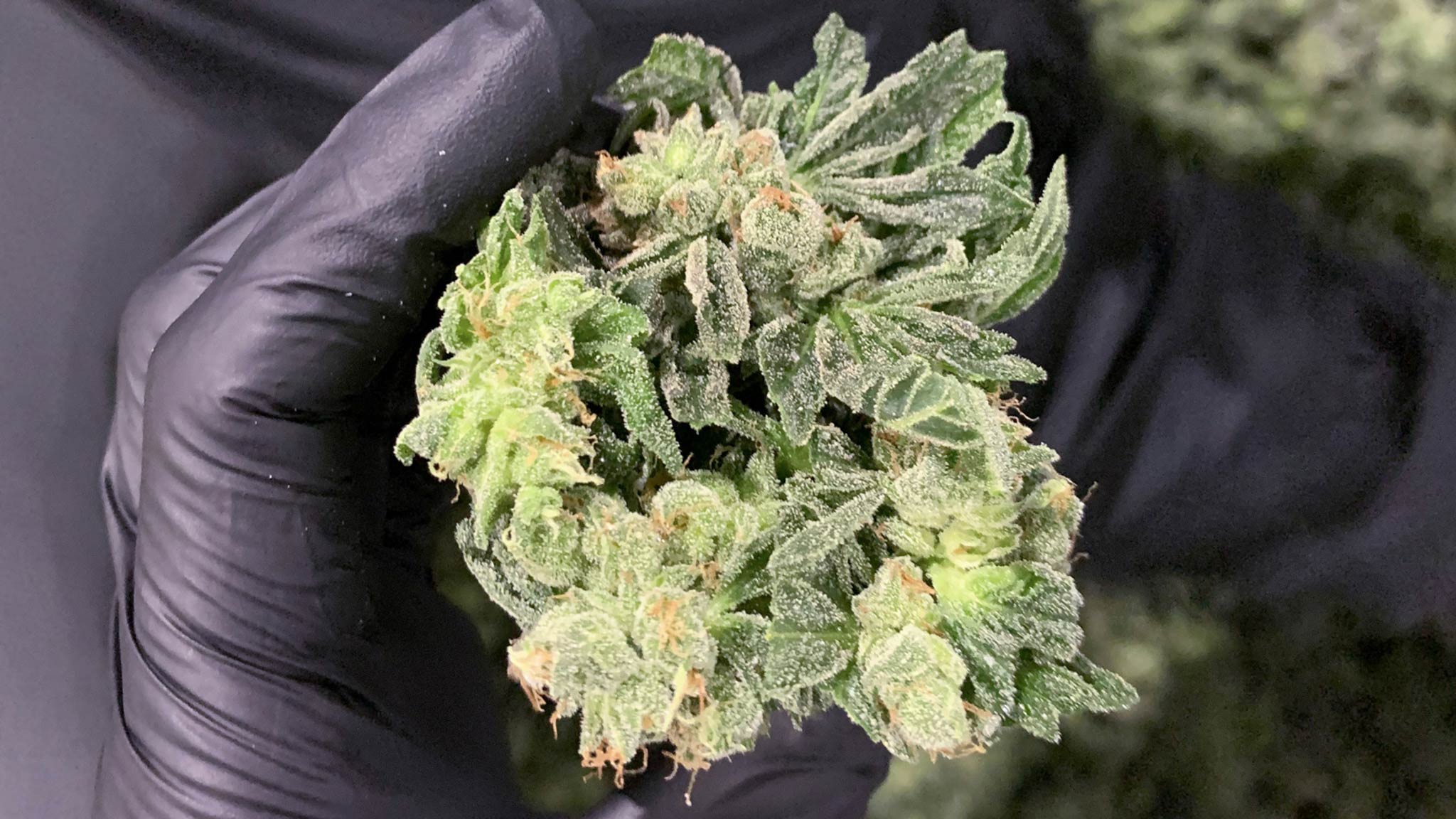
One of the only studies available on the preservation of cannabinoids in the real world indicates that simple refrigeration for long-term storage is inadequate. In this study, the degradation of THC and CBN in different environments were studied over a four-year period, with four different environments having been tested:
A) room temperature and full light exposure,
B) room temperature and complete darkness,
C) refrigeration of 39.2°F (4°C) and darkness, and, finally,
D) freezing at -4°F (-20°C) and darkness.
This study confirmed what many have known for a long time, which is that light, temperature, and oxygen all can degrade cannabinoids over time. The results from the study are succinctly described in the graphic below and show almost complete preservation of both THC and CBN over a full four-year period in storage scenario D (Zamengo et al., 2019). Another study on this topic indicates that the acidic cannabinoids (THCA, CBDA, CBGA, etc.) which have not been decarboxylated can degrade at room temperature within 24 hours or less (Giese et al., 2015).
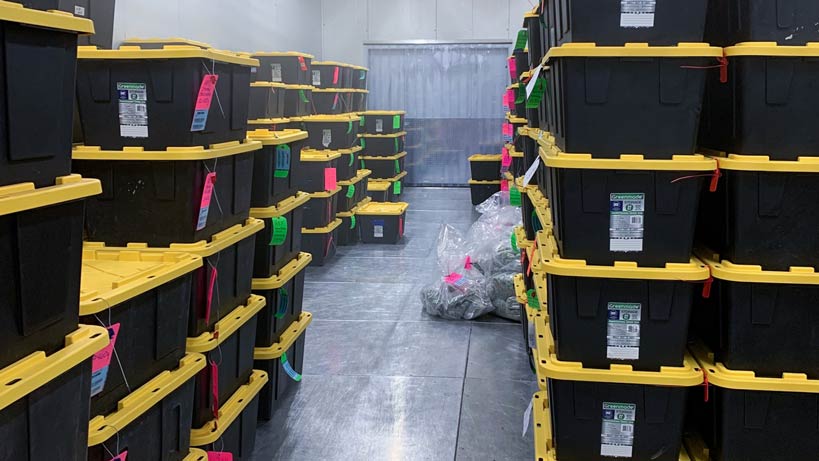
While not all processors run into the challenge of storing large amounts of fresh frozen cannabis for long periods of time, these studies do seem to prove that actual freezer storage is critical for full cannabinoid preservation. In certain markets where outdoor or greenhouse cannabis is a staple input for cannabis processors and only comes around seasonally or every handful of months, having ample walk-in freezer space is essential to maintaining a product processing schedule capable of weathering market fluctuations in product availability and price.

In the cannabis cold chain, we are most concerned with the preservation of volatile terpenes because they are the most easily lost once cannabis plants are harvested. There are plenty of beautiful graphs and charts available showing the boiling points of the most popular cannabis mono- and sesquiterpenes, but the boiling point is where all of the terpenes have dissipated and are no longer present. What is most concerning is the amount of those same mono- and sesquiterpenes that are volatilized at room temperature or at any point above 0ºC. Serious study and effort have gone into preserving terpenes for packaged cannabis flower, which is kept at room temperature in sealed containers (sometimes even nitrogen-gas sealed containers) but keeping cannabis frozen throughout the entire extraction process, all the way to a refrigerator or ideally a freezer at a dispensary, is key to minimize volatilization of those precious compounds.
Optimal material preservation gives cannabis processors the best chance possible to make premium finished products. Extractors who are looking to win awards and bring the very best concentrates to market need to pay attention to each step along the way, including:
- Harvest – Growers must ensure that the plants are defanned, gently bucked, placed in airtight bags, and then frozen immediately. All of this must happen as quickly as possible.
- Transportation – If a business is purchasing fresh frozen and it needs to be transported any meaningful distance, ensure that it is stored during this journey in a way that keeps it frozen. This can be done in high quality coolers with dry ice, but make sure that the dry ice is not directly touching the bags.
- Processing – Typically, material is not processed the same day that it arrives, so having adequate freezer space is important prior to solventless washing or solvent extraction. For ice water hash production in particular, the washing process should be conducted in a cold room (ideally below 55°F or as close to freezing as possible).
- Post-processing – This tends to be the stage where some volatile terpenes can be lost, as live resin needs to be adequately purged in a vacuum oven and live bubble hash is typically pressed into rosin. For rosin, pressing high quality ice water hash at lower temperatures (140°F – 180°F) and for as little time as possible is best. Once finished, live resin, live rosin, and full melt ice water hash should be stored in a freezer in vacuum sealed bags prior to shipment.
- Transportation and dispensary storage – Lastly, make sure that all of your grammed concentrates are transported and stored in a cold environment all the way to retail. While shelf space is at a premium, most dispensaries have small refrigerators or freezers for these top shelf concentrates. If one of your top dispensaries doesn’t, purchasing a custom branded one for them to use is worth every penny.
All kinds of turns of phrase have emerged describe the best ways to enjoy cannabis live extracts. One such saying many connoisseurs are fond of is “waste to taste,” meaning that it’s better to take very low temperature dabs for maximum flavor even though you won’t get as high as if you had done so at a higher temperature, thus “wasting” some product. This is not only smart consumption and a good marketing play for any high end extract brand to embrace, but also a “healthier” method of consumption given the fact that many terpenes are carcinogenic when dabbed at high temperatures. Studies have found that the presence of methacrolein and benzene in dabbed live resin increases dramatically when dabs are done above approximately 403°F, but are virtually non-existent below that point (Meehan-Atrash et al., 2017). For the most expensive concentrates, such as true “six-star,” full-melt bubble hash or perfectly made cold cure live rosin, dabbing around the 400°F mark or lower is the best way to enjoy the delicate flavors of the best strains available.

In mature markets, this attention to detail within the cannabinoid/terpene cold chain is just business as usual, but in emerging ones, taking these extra–and often costly–steps can be quickly justified as a means of differentiating your premium extraction brand from less detail-oriented competitors. While even the most perfectionist hash makers accept that some volatile terpenes will be lost before their finest efforts reach customers, this is minimized when the cold chain process is executed well. This entire process also presents itself as a terrific opportunity for extraction brands to educate consumers while highlighting their meticulous processes.
Leveraging the cold chain to preserve cannabinoids and terpenes can give your brand a cutting edge when it comes to premium products. And Agrify’s experienced extraction experts are here to help you build the extraction system you need to bring the very best concentrates to market. Are you ready to level up? Talk to an extraction specialist today!




